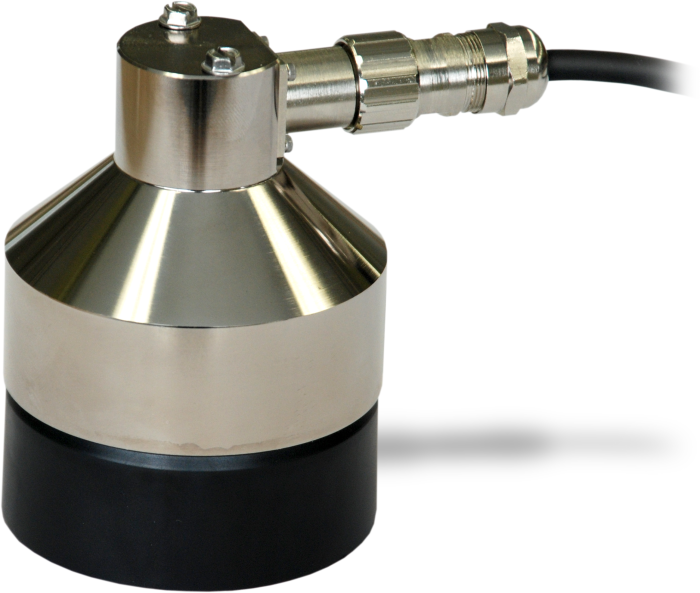
Typically used for snow depth measurements






The next generation of the SR50A snow-depth sensor is now available.
Check out the SnowVUE™10.
Overview
The SR50A Sonic Distance Sensor provides a non-contact method for determining snow depth. It determines depth by emitting an ultrasonic pulse and then measuring the elapsed time between the emission and return of the pulse. An air temperature measurement is required to correct for variations of the speed of sound in air.
Note: Campbell Scientific recommends model SR50A-EE-L for operation in extreme environmental conditions where corrosion is a concern (such as coastal regions).
Read MoreBenefits and Features
- Wide operating temperature range
- User-selectable options for output
- Rugged enough for harsh environments
- Uses a multiple echo processing algorithm to help ensure measurement reliability
- Compatible with most Campbell Scientific data loggers
This product is supplied with a standard length of cable (typically 3 m) - other lengths may be available to order.
Technical Description
The SR50A was designed to meet the stringent requirements of measuring snow depth, and it uses a multiple echo processing algorithm to help ensure measurement reliability.
SDI-12, RS-232, and RS-485 output options are available for measuring the SR50A. Campbell Scientific’s MD485 interface can be used to connect one or more SR50A sensors in RS-485 mode to an RS-232 device. This can be useful for sensors that require lead lengths that exceed the limits of either RS-232 or SDI-12 communications.
The SR50A replaced the SR50 in March 2007. The newer SR50A is smaller and has different output options than its predecessor. The SR50AH is available with a heater option for locations where rime ice is a problem.
Images

Compatibility
Please note: The following shows notable compatibility information. It is not a comprehensive list of all compatible products.
Dataloggers
| Product | Compatible | Note |
|---|---|---|
| CR1000 (retired) | SDI-12 and RS-232. For RS-485, requires an MD485 interface or similar RS-485 to RS-232 interface. | |
| CR1000X (retired) | SDI-12 and RS-232. For RS-485, requires an MD485 interface or similar RS-485 to RS-232 interface. | |
| CR200X (retired) | SDI-12 | |
| CR216X (retired) | SDI-12 | |
| CR300 (retired) | SDI-12 and RS-232. For RS-485, requires an MD485 interface or similar RS-485 to RS-232 interface. | |
| CR3000 | SDI-12 and RS-232. For RS-485, requires an MD485 interface or similar RS-485 to RS-232 interface. | |
| CR310 | SDI-12 and RS-232. For RS-485, requires an MD485 interface or similar RS-485 to RS-232 interface. | |
| CR350 | SDI-12 and RS-232. For RS-485, requires an MD485 interface or similar RS-485 to RS-232 interface. | |
| CR5000 (retired) | SDI-12 and RS-232. For RS-485, requires an MD485 interface or similar RS-485 to RS-232 interface. | |
| CR6 | SDI-12, RS-232, and RS-485 | |
| CR800 (retired) | SDI-12 and RS-232. For RS-485, requires an MD485 interface or similar RS-485 to RS-232 interface. | |
| CR850 (retired) | SDI-12 and RS-232. For RS-485, requires an MD485 interface or similar RS-485 to RS-232 interface. | |
| CR9000X (retired) | SDI-12 and RS-232. For RS-485, requires an MD485 interface or similar RS-485 to RS-232 interface. |
Miscellaneous
| Product | Compatible | Note |
|---|---|---|
| GRANITE 6 (retired) | SDI-12 and RS-232. For RS-485, requires an MD485 interface or similar RS-485 to RS-232 interface. |
Specifications
| Measurement Description | Snow depth |
| Measurement Time | < 1.0 s |
| Measurement Range | 0.5 to 10 m (1.6 to 32.8 ft) |
| Output Options | SDI-12 version 1.3, RS-232, RS-485 (output options selected by configuring internal jumpers) |
| Baud Rates | 1200 to 38400 bps (RS-232, RS-485 modes) |
| Power Requirements | 9 to 18 Vdc (typically powered by data logger’s 12 Vdc power supply) |
| Beam Acceptance | ~30° |
| Resolution | 0.25 mm (0.01 in.) |
| Accuracy | ±1 cm (0.4 in.) or 0.4% of distance to target (whichever is greatest). Requires external temperature compensation. |
| Operating Temperature Range | -45° to +50°C |
| Temperature Accuracy |
|
| Compliance | CE Compliant |
| Length | 10.1 cm (4.0 in.) |
| Diameter | 7.5 cm (3 in.) |
| Cable Weight | 250 g (8.2 oz) for a 4.57-m (15-ft) cable |
| Weight |
|
Maximum Cable Length |
|
| -NOTE- | Cable lengths greater than 60 m require a heavier gage wire if the power supply drops below 11 Vdc. |
| SDI-12 | 60 m (200 ft) |
| RS-232 |
60 m (200 ft) Baud rates ≤ 9600 bps |
| RS-485 | 300 m (984 ft) |
Power Consumption |
|
| Active | 250 mA (typical) |
| Quiescent SDI-12 Mode | < 1.0 mA |
| Quiescent RS-232/RS-485 Modes |
|
Resources and Links
Product Brochures
Downloads
SR50A example programs v.1 (11 kB) 22-01-2020
CR6 and CR1000X programs that directly read each type of SR50A output (SDI-12, RS-232, RS-485), and a CR1000 program that reads the RS-485 output using an MD485 Multidrop interface. A 107 sensor provides the temperature measurement needed for temperature compensation. The programs use the data filtering method described in the manual.
FAQs for
Number of FAQs related to SR50A-L: 15
Expand AllCollapse All
Case Studies
Currently, the Andean tropical glaciers are in an accelerated process of retreat. These glaciers are......read more
Articles and Press Releases
Privacy Policy Update
We've updated our privacy policy. Learn More
Cookie Consent
Update your cookie preferences. Update Cookie Preferences






